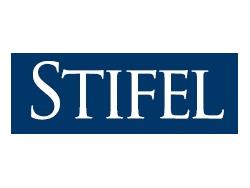Stifel Offers Preliminary Call on Floorcovering Segments for Q1
St. Louis, MO, March 27, 2019-Analyst Stifel has offered this preliminary call on the growth in floorcovering market segments for Q1 2019, though earnings results remain a few weeks away.
“There was a discernable slowdown in consumer spending rate of growth on flooring in Q4 2018, and this slower spending pattern has continued into Q1. We are hearing the weather excuse to some degree, but this is always treated with cynicism. Additionally, the sluggish housing construction activity that was apparent in the second half of 2018 puts pressure on housing completions in Q1 as flooring typically goes in closer to completion. Lastly, the ABI Index, a decent forecaster of commercial demand, showed weakness in its latest print and we hear demand in this market is choppy. As a reminder, approximately 55% of flooring demand is residential repair/remodel, 25% to 30% commercial and 15% to 20% new residential construction.
“The growth of LVT continues to disrupt the normal cadence of the flooring market. While reliable data for 2018 is not in yet, we are fairly comfortable saying that a minimum of 75% of the industry’s growth was in LVT, and it could have been close to 100%. For a category that is only 12% of the flooring industry to take so much share of the growth is problematic for manufacturers of other types of flooring, exacerbated by the fact that the vast majority of LVT sold in the U.S. is sourced from China. High levels of LVT inventory were built in the U.S. in advance of the Chinese New Year and concerns that a 25% tariff would be implemented at the start of 2019. While 20% plus growth in demand for LVT will no doubt allow for this inventory to be reduced, it adds a further layer of complexity to Q1 results and potential incremental pressure on the other flooring categories.
“In units, we believe ceramic tile grew modestly in 2018 but non-LVT vinyl, carpet, laminate and wood clearly declined. There was some price inflation that helped mitigate some of the unit declines, but we are fairly confident that at least 100% of the industry’s unit growth in 2018, if not more, was LVT. There is no pure way to play the LVT growth explosion in equities. The leading manufacturers are private Chinese companies and the largest sourcer, Shaw Industries, is part of Berkshire Hathaway. Arguably the retailers are more flexible to adapt to the merchandise shifts but the 10% tariff on Chinese goods has forced FND [Floor & Décor] and LL [Lumber Liquidators] to adjust. The publicly traded manufacturers (Mohawk, Interface, Armstrong, Tarkett, The Dixie Group) are all more heavily indexed to legacy flooring substrates than LVT.”
Related Topics:The Dixie Group, Mohawk Industries, Lumber Liquidators, Interface, Shaw Industries Group, Inc., Armstrong Flooring, Tarkett
